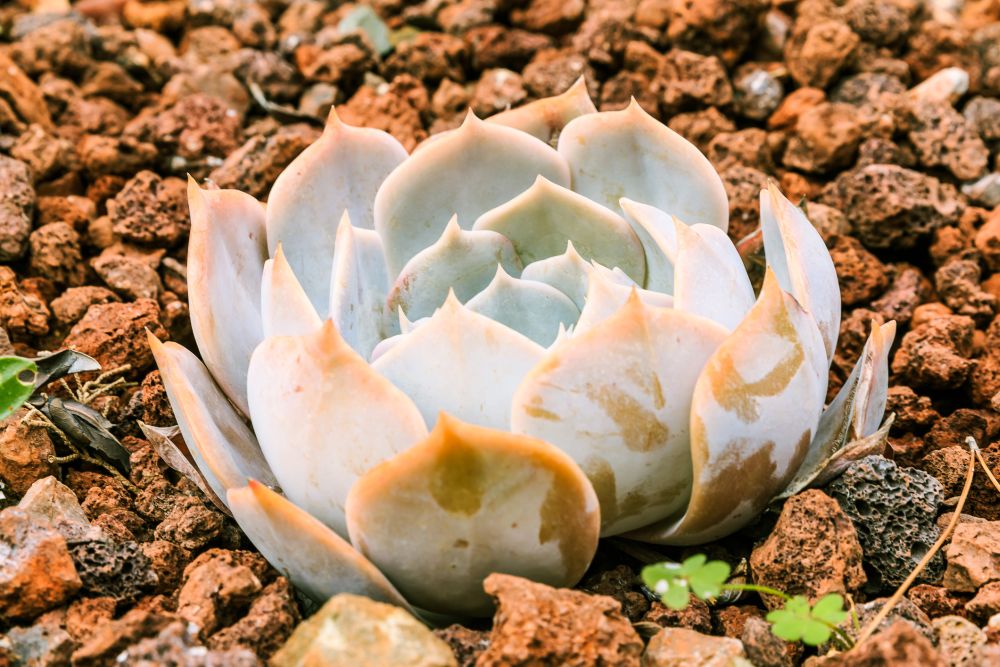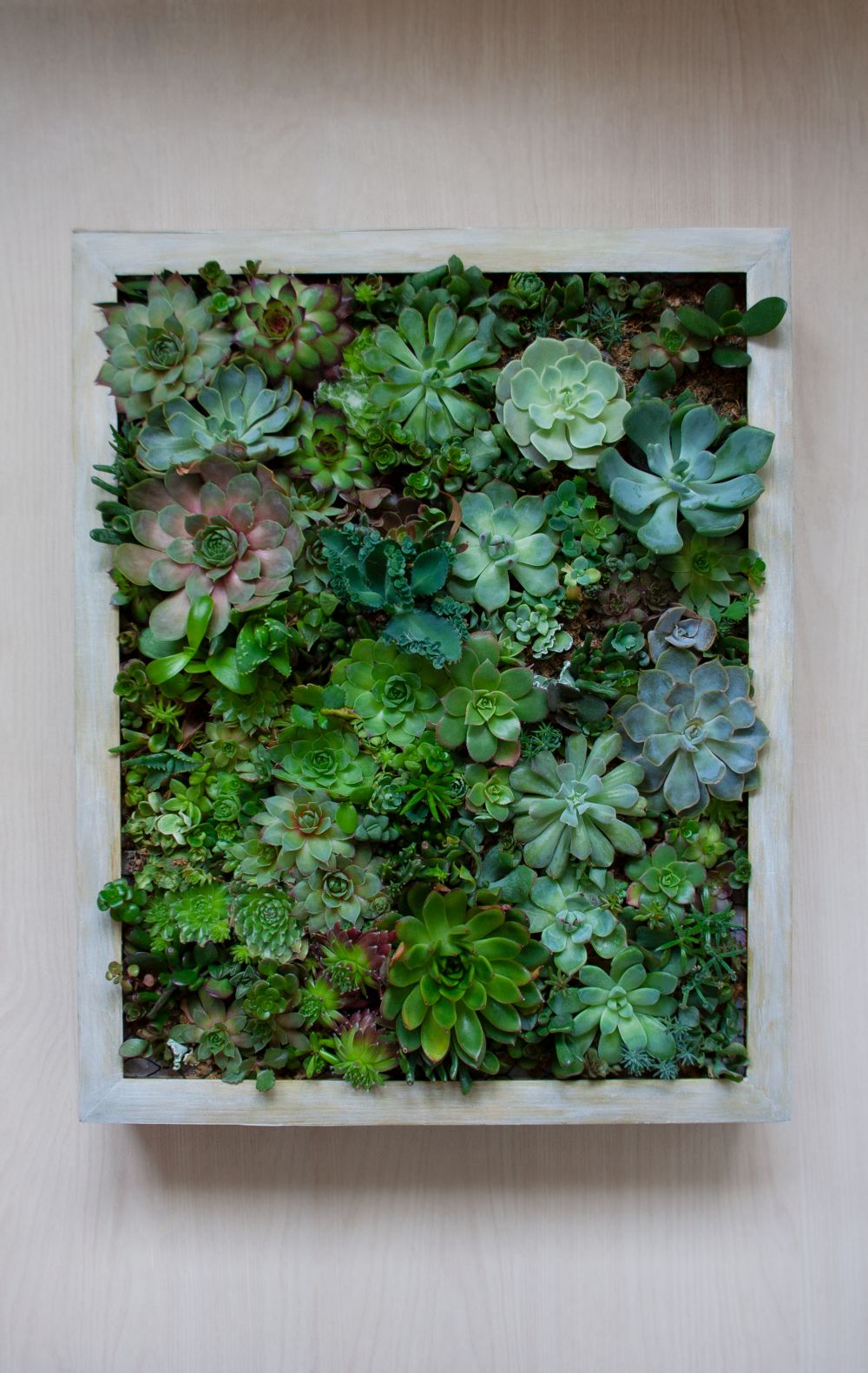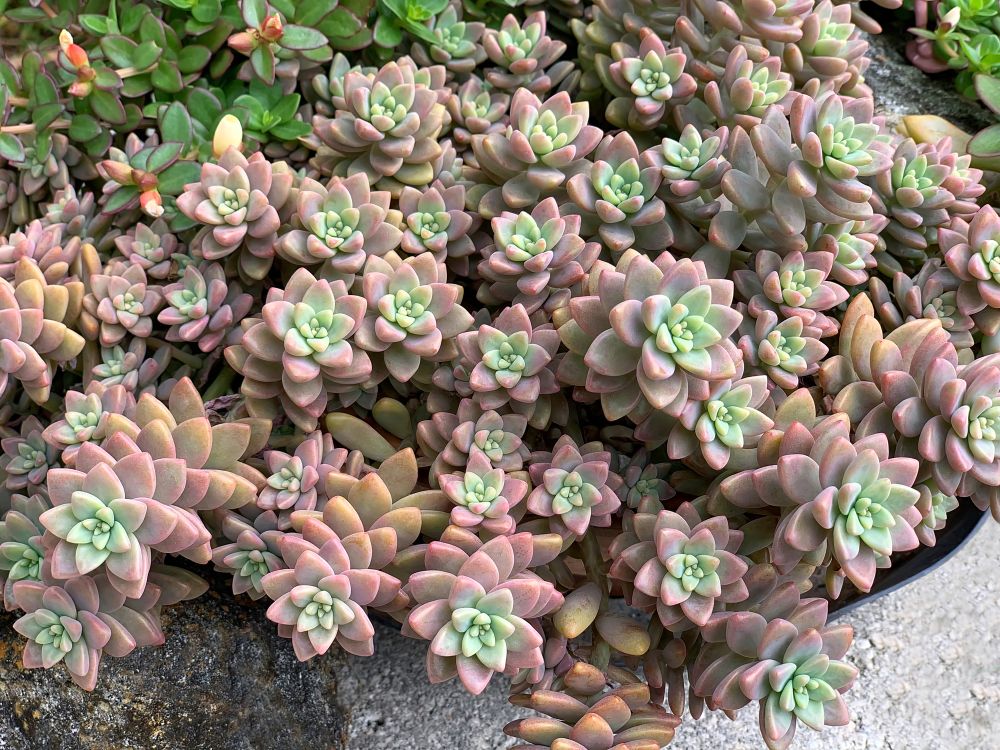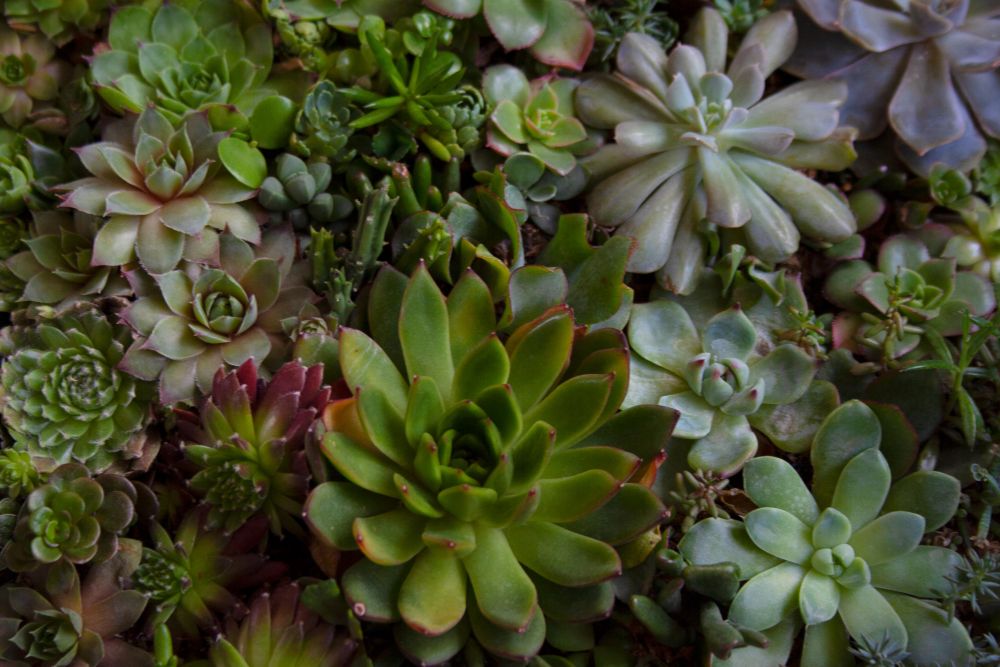How to Grow Graptoveria Succulents
Hybrid succulents have so much to cherish. In this guide, we’ll check out a few facts and growing tips for Graptoveria succulents. With chubby and popular varieties in this family of succulents, gardeners would be spoilt for choice since all of them possess vivid colors and grow in a rosette pattern that holds the entire foliage quite compactly.
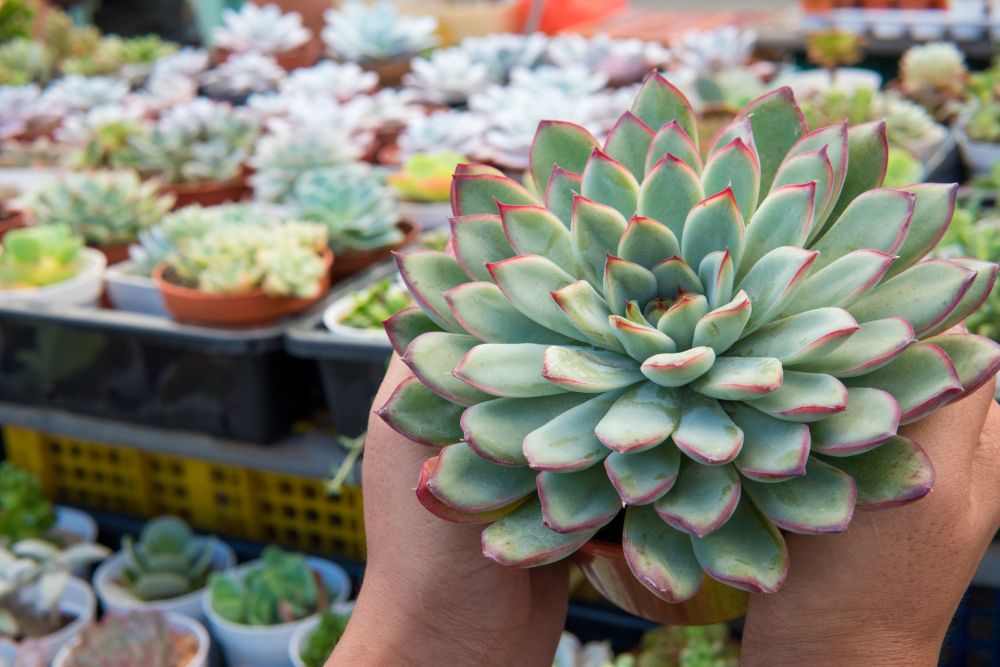
So, suppose you’re looking for a miniature houseplant to grow that’s unfussy and has hardy traits, you probably want to consider growing a member in the family of Graptoveria succulents. Keep reading to find more about this hybrid succulent plant.
More About Graptoveria Succulents
There are quite a handful of Graptoveria types that gardeners tend to cherish the most. Apart from the ‘Moonglow,’ you’ll more likely find the ‘Fred Ives,’ ‘Blue Pearl,’ or ‘Graptoveria Opalina’ type in most gardening stores. Graptoverias are resilient succulents that make an excellent addition to the garden or indoor space. They’re a hybrid of Graptopelatum and Echeveria succulents. On average, this rosette-forming plant will grow up to 8′ inches tall and spread wide to nearly identical dimensions.
You can grow it inside a terrarium display or place the growing medium on a windowsill. Depending on the light, watering, and temperature conditions, this succulent can change its color from blue to pink, purple, or red hues. The tips on the leaves are usually bluish-purple, but they later turn pink when stressed by adverse growing conditions. What strikes this succulent apart from other commonly grown types are the waxy leaves and an alluring rosette pattern.
How to Grow Graptoveria Succulents
Flowering & Fragrance
When fed with the right growing conditions, the chances of blooming will get optimally elevated. Therefore, you can expect your Moonglow succulent to produce flowers anytime between late spring and early summer. The flowers are usually star-shaped and come in different colors ranging from yellow, orange, white, and peachy pink. When exposed to the summer light, the color of the blooms will become more vivid and intense.
Watering
Like most other succulents, Graptoverias aren’t thirsty plants. They won’t need to be watered frequently, but you need to grow them in well-draining potting soil. When growing outdoors, moisten the ground only once a week during warmer months since the houseplant is drought-tolerant and stores water in its thick leaves. Even with all the hardy traits, this succulent doesn’t like to sit in soggy soil for too long. So, you only want to water it when the first few inches of the topsoil are entirely dry.
At times, it’s best to wait for signs from the plant. The leaves, for instance, will start to slightly wrinkle when there isn’t enough moisture to sustain their succulent appearance. If the leaves are looking shriveled, then it’s time to water your houseplant. Also, dip your finger in the soil to check whether it’s entirely dry to avoid the adverse effects of keeping it overly moist. Overwatering your Moonglow succulent is more likely to cause a thread of fungal diseases, including root rot.
Mushy and brown splotches on the leaves are common signs that you’re overwatering your Graptoveria succulent. Placing a pebble tray under the growing medium would help harvest any excess moisture from the soil. You also want to keep the container somewhere with low humidity levels throughout the growing seasons. Leaving the roots to experience a dry period gives them some grace period to breathe. Most of all, don’t be tempted to use a spray bottle when moistening the soil. Any water getting stuck in the foliage would lead to leaf rot.
Fertilizer
Though not necessary, it’s best to kick a new growing season off with some feeding. While there isn’t any test for how much fertilizer is enough, doing it the right way is what matters the most. The downside of using synthetic fertilizers is they hold high nutrient concentrations that could burn the leaves or cause plant shock when used excessively.
And for this reason, you may want to dilute the chemical fertilizer or use liquid plant food—whichever suits your Graptoveria succulents best. But if you’re going to dodge the adverse effects of synthetic remedies, organic fertilizer would be a suitable option. When growing this succulent outdoors in a warm environment, an optimal organic feeding remedy with the potential to yield solid results would be compost manure.
You can fetch composted manure from grazing animals such as cows, chickens, and sheep. The waste materials from earthworms, also commonly referred to as worm casting, are rich in humus, help balance the soil pH, and improve the overall aeration rate. It’s worth noting that the roots of this succulent need enough air circulation, so keeping the soil well-aerated is essential.
Apart from nitrogen and phosphate, some of the notable macro-nutrients that your Graptoveria succulent will absorb from worm castings include calcium, magnesium, zinc, potassium, and iron—to list a few. Also, you can opt to use the Miracle-Gro liquid plant food, which is easy to spray and works perfect on both indoor and outdoor succulents. So, here’s the bottom line when it comes to feeding—you don’t need to fertilize your Graptoveria succulent. Instead, a humus-rich potting soil that drains well would suffice.
Light & Temperature
There’s no doubt that bright light highly favors succulents. Even so, it will still survive under some partial shade, so growing it indoors won’t affect its growth rate. But for optimal results, it’s best to place the growing medium close to an east-facing window so that it can enjoy the morning sun. A south-facing window is also ideal since it can allow your Moonglow succulent to receive at least 6 or 7 hours of bright light each day. Etiolation—a habit of growing leggy or stretching sideways—might occur if the entire foliage is desperately searching for light.
If this condition prevails, you’ll need to trim the tips and edges so the plant can shrink back to your desired shape and size. When growing indoors near a bright window, make sure to rotate the growing medium at close-range intervals to give your Moonglow an optimal room for growing at an even and almost symmetrical size. If your Graptoveria has been growing under a shady area, you want to introduce it to a bright environment. And that should be at a gradual pace to protect the leaves from getting sunburned.
Sunburns usually leave brown spots on the leaves, and the offshoots that grow on the edges of the parent plant tend to die prematurely. So, it’s best to inspect this succulent plant for such signs as part of the grooming routine. What’s dismaying about the leaves getting burned is that they can’t revert to their recognizable different and radiant colors. And it’s no reason why filtering any direct access to the sun would be elemental in maintaining the plant’s overall appearance.
Like most other succulents, the Moonglow plant isn’t frost-hardy. On average, succulents like the Moonglow prefer to grow under temperatures ranging between 60 to 80 degrees Fahrenheit. Even when growing outdoors, the best part about growing the succulent inside a container is it would be easier to move it inside anytime the temperatures drop drastically. Move the growing medium from the outdoor setting when the temperatures fall below 45 degrees Fahrenheit.
Soil & Transplanting
Graptoveria succulents are generally accustomed to growing in rocky gardens so long as the climate and other growing conditions are suitable. While they’re slow growers, they still spread wide rapidly; hence it’s best to use a medium-size container when preparing the potting soil. It’s always best to use well-draining soil when growing this succulent. Also, you want to consider the rate of aeration since the roots need enough air circulation throughout the growing seasons.
For optimal drainage and aeration, I prefer mixing regular succulent soil with perlite or pumice, preferably at the rate of 70:30. If you’re propagating your Moonglow plant using offsets from your nursery, you’ll need to transplant them into individual containers. And since it’s a slower grower, there won’t be any need to repot it into a much bigger growing medium in the future. Perlite is an organic amendment that helps maintain moisture levels in the soil.
Grooming & Maintenance
There isn’t anything much to do regarding grooming since this succulent is a low-maintenance plant. But to tidy it up and keep a desired aesthetic, you might need to prune the houseplant soon as it starts to show signs of becoming leggy. Next, pluck off any leaves that look entirely wilted or have symptoms of fungal infections. It’s natural to find some leaves falling off. So, it would be best to eliminate any debris on the edges of the growing medium to keep it from turning into a breeding spot for pests.
How to Propagate the Graptoveria Plant
It’s reasonably easy to propagate the Moonglow succulent. You can opt to use seeds, cuttings, or offsets. For leaf or stem cuttings, make sure to pick those without bacterial or fungal infections. Let’s check out the steps to follow for each propagation method.
Cuttings
Using stem cuttings would produce incredible results, especially if the rosette hasn’t developed compactly. Make sure to use a sterilized knife or pair of scissors when dissecting the cuttings to limit any chances of infections. The stem cuttings need to be cut at least 1.5 inches below the base part of the parent plant. Leave them outside to give the wounds some grace period for healing. Once a callous that protects the wound from infections has formed, you’ll need to prepare the potting soil. Plant the cuttings and gently press the topsoil around them so that they can have a firm base.
The formation of roots could take a few weeks. During this phase, you’ll need to water the cuttings only when the soil has dried out completely. Keep the growing medium under bright but indirect light. After the roots have formed, transplant the cuttings into individual containers and use cactus or succulent soil. Fill the rest of it with a mix of 50% perlite and 50% pumice. This way, you’ll provide enough drainage without compromising too much on humidity.
Seeds
The downside of using seeds is they take a bit longer to germinate, hence why they’re an unpopular method, especially when it comes to propagating succulents. But to enhance the growing conditions and optimize results, you need to throw in a couple of tweaks. And, using grow lights or a seeds tray warmer would still help achieve the same results. Also, moisten the soil anytime it feels dry.
Leaves
Propagating using leaves uses more or less the same criteria as stem cuttings. First, gently pinch the leaves from a healthy stem. Make sure no part of the leaf is left on the branch. Leaves that are damaged have slim chances of developing into mature plants after propagation. Within 2 to 3 days, the wounds will have formed a callous. Once the scars have dried up, prepare a succulent or cactus soil and plant the leaf cuttings. Same as cuttings, it’s more likely to take a few weeks for the roots to form.
Offsets
Over time, a few offshoots will fall off from the parent plant and grow on the edges of the growing medium. You can uproot these pups and use them to propagate your Graptoveria succulent. Pick an offset that’s at least ¼ the size of its mother plant. It would be best if you allowed these rosette offsets to dry before planting them.
Common Graptoveria Pests & Problems
Same as most other succulent plants, the Moonglow is prone to mealybugs and scale insects. Mealybugs tend to suck the sap right from the leaf nodes and excrete a cotton-like substance on the surface. You can use home remedies such as neem oil or soapy water to get rid of these bugs. Aphids also like to attack this rosette succulent in mass numbers. They’re usually green, white, or black and damage Graptoveria plants in the same fashion as mealybugs.
Apart from those, you won’t need to deal with other significant pests. If the leaves are stretching far apart from each other, it could mean that they’re desperately in search of light. To make the entire foliage more compact, move the container to a spot where the plant can absorb bright light. On the other hand, too much sunlight will burn the leaves, so you want to strike a balance. If the foliage is leaning towards one side, there are chances growth hormones are forcing the plant to elongate towards the brightest window.
It’s normal for the leaves to appear blotched when the color is transitioning due to adjustments in the light conditions. While this succulent type can tolerate neglect together with the effects of overwatering, leaving the soil soggy for too long could lead to root rot. It also causes the leaves to turn yellow and appear mushy. Rosette forming succulents start developing right from the center as the lower leaves absorb essential nutrients. And for this reason, you might see a few leaves on the base part of the plant falling off in the long run, so don’t panic. Pull them off to keep the base part of the growing medium clean.
